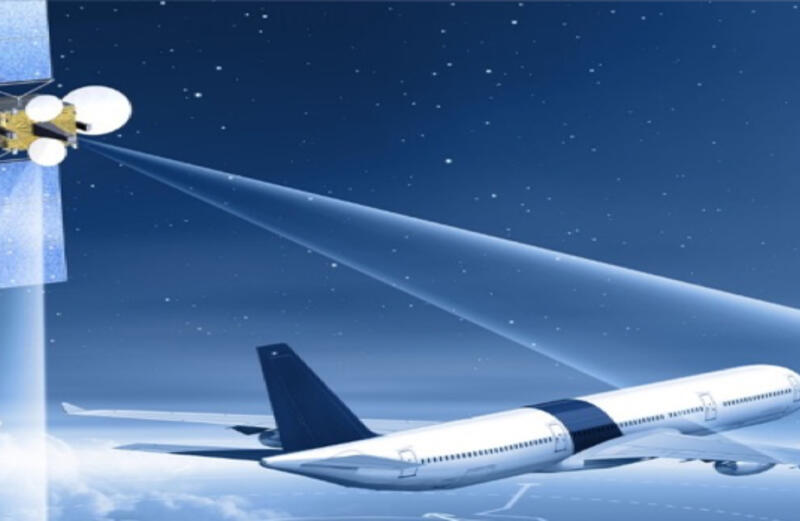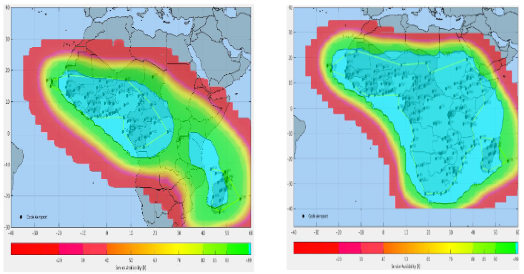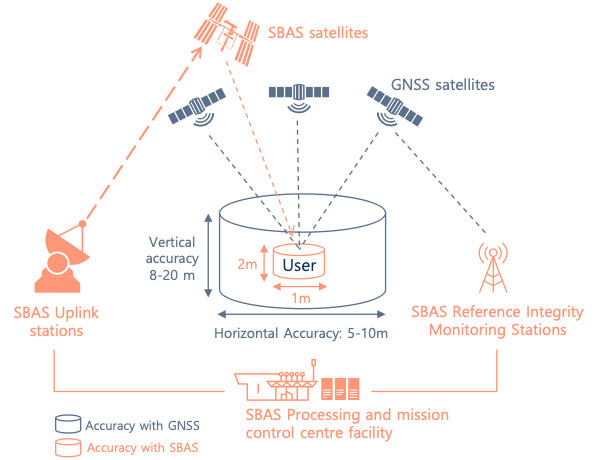SBAS, for Africa, leverages on satellites to enhance aviation performance and safety throughout Africa.

The Agency for Aerial Navigation Safety in Africa and Madagascar (ASECNA) has inaugurated Africa into a Satellite-Based Augmentation System (SBAS). SBAS is an improved system with an accurate and reliable Global Navigation Satellite System (GNSS) constellation without the need for local ground-based navigation aids and landing systems at airports. Africa, led by ASECNA, is now able to develop its own SBAS system, for the benefit of all aviation stakeholders, that is, airlines.
The African Union Development Agency-NEPAD (AUDA-NEPAD) through its Continental Business Network (CBN) with the technical assistance of ALG and the support from the GIZ collaboratively worked with two African airlines, ASKY and Air Côte d’Ivoire, to develop a tailored business case tool to quantify the financial implications of the case of SBAS for airlines. A massive success to the AUDA-NEAPD ensures the African continent moves a stage forward in improving the transport sector.
ASECNA is committed to the autonomous provision of SBAS services in the Africa & Indian Ocean (AFI) region. The SBAS programme is currently under development, with successful pilot demonstrations performed in Lomé in January 2021, given the provision of operational services by 2024. Successive evolutions are expected to give coverage to the whole of sub-Saharan Africa.

- EV0 evolution (from 2024): West and Central Africa
- EV2 evolution (from 2028): West and Central Africa & Indian Ocean
- EV4 evolution (from 2032): Sub-Saharan Africa
The Satellite-Based Augmentation System (SBAS) consists of a set of geostationary satellites that broadcast positioning corrections calculated using a network of geographically distributed reference stations. These corrections improve the accuracy and reliability of the Global Navigation Satellite Systems (GNSS) constellations without the need for local ground-based navigation aids and landing systems at airports.

The position accuracy of GNSS standalone, typically in the range of 5-10 meter horizontally and 8-20 meter vertically, can be improved down to 1 and 2 meters respectively with SBAS. Additionally, GNSS does not provide information on how reliable the position is (integrity concept), whilst SBAS does bring this safety-critical information.
SBAS systems have been developed in Europe (EGNOS), US (WAAS), MSAS (Japan) and GAGAN (India), with ongoing initiatives in Rusia, China, Australia & New Zealand, Korea to be operational in the next two to three years.
The economic results derived from the analysis proved to extremely positive, with the aircraft retrofits giving Return on Investments (ROI) in the order of 200% to 500%, Internal Rate of Returns (IRRs) between 26% and 58%, and payback periods of 4 to 6 years depending on the aircraft model and routes flown.
The global NPV (Net Present Value) results for the retrofit of a medium-sized airline of 18 aircraft serving 250 arrivals per week and 760,000 passengers per year is in the order of 2.5 M$.
A sensitivity analysis was also performed in all cases, to assess the robustness of the results and the influence of certain key parameters such as fleet age, retrofitting start year, avionics costs and traffic scenarios. In all cases, the business case proved very profitable, demonstrating the robustness of the economic case against variations.
SBAS provides benefits for many aviation stakeholders across the value chain (airlines, Air Navigation Service Providers and airport operators) and in other market segments, such as maritime, rail, agriculture or drones. This paper focuses on the benefits provided to airspace users and the economic business case of SBAS equipage in aircraft.
Overall, the increased levels of precision and integrity provided by SBAS derive in safety and operational benefits, as well as induced traffic growth benefits.
For the case of safety, SBAS can greatly reduce the number of CFIT (Controlled Flight into Terrain) events, as vertical navigation is the main cause for these accidents. Africa, due to its discontinuous ground aids to navigation infrastructure (14% of AFI airports equipped with Instrumental Landing Aids), represents around 20% of the global fatalities for these types of accidents. Additionally, the overall accident rate in Africa in the 2015-2019 period measured in accidents per million departures (7.5) is greatly above the world average (2.64).
However, SBAS transcends safety and also provides quantifiable operational benefits for airlines. SBAS reduces the decision height of approaches with respect to other aircraft-based alternatives, reducing the rate of Delays Diversions and Cancellations (DDCs) with adverse weather conditions. The increased precision also allows for smoother and curved approaches, generating flight efficiency savings due to decreased fuel consumption. As a derived benefit, these fuel savings also induce environmental emission saving benefits, aligned with the global industry objectives on carbon footprint reduction.
Finally, SBAS increases the safety and accessibility to secondary airports without navigation infrastructure, which can encourage airlines to operate to these airports and thus boosting domestic and intra-African connectivity with induced benefits for the local economies.
For these reasons, SBAS has been recognised as a key enabler of the SAATM (Single African Air Transport Market), flagship programme of the African Union.
In terms of costs, airlines must incur in avionics equipage, certification and in some cases pilot training costs in order for the aircraft to obtain SBAS-capability. This investment is higher for existing aircraft which need to be modified (retrofitting) than for new aircraft, in which SBAS is increasingly becoming an “option”.
It is therefore crucial to demonstrate how the potential benefits will cover the costs incurred by the airlines, in order to obtain the commitment from these users. This economic viability of SBAS must also be demonstrated to the financing institutions, in order for them to aid the airlines in their investments. This is crucial for the overall success of the SBAS in Africa programme.
SBAS is considered the opportunity for African airlines to leverage satellites to enhance their operational performance and the levels of safety in the continent and its implementation has proven to be highly profitable through a tailor-made business case developed in unison with African airlines.
